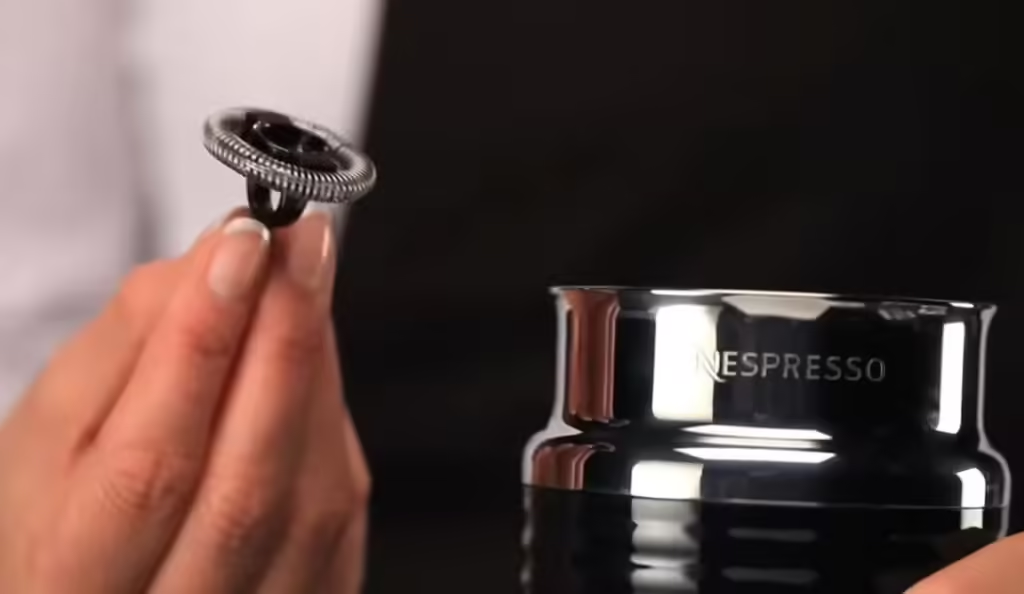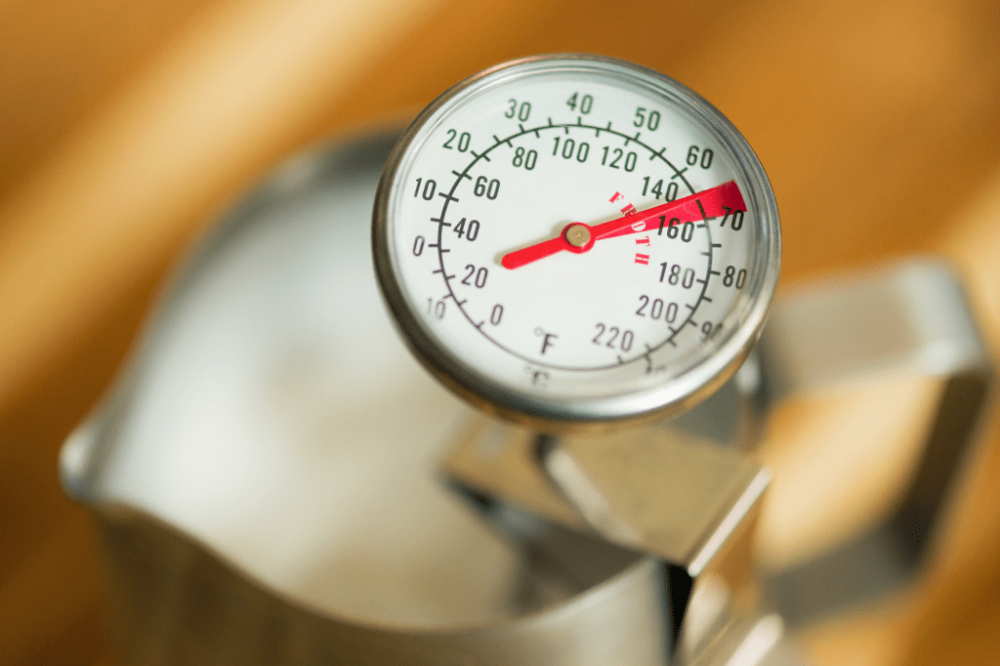Hey coffee aficionados! Whether you’re a home barista or a café owner, your espresso machine is your best friend. It delivers that perfect shot of espresso to kickstart your day or impress your guests. But, like any trusty companion, it needs regular TLC to keep performing at its best. Proper maintenance and care are not just about keeping the machine running; it’s about ensuring that every cup of coffee you brew is consistently top-notch.
Regular maintenance and care for espresso machines can significantly extend the lifespan of your espresso machine, saving you from costly repairs or replacements. Plus, a well-maintained machine guarantees that each espresso shot is as delicious as the last, keeping your coffee game strong and your mornings delightful.
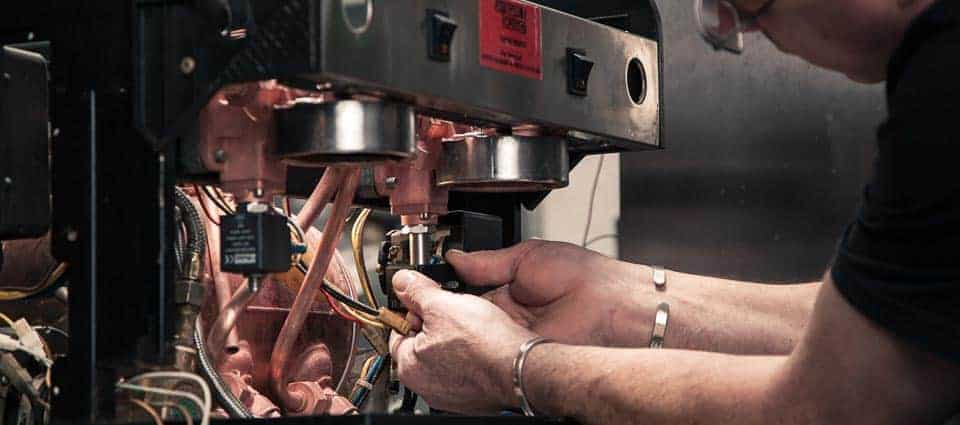
Daily Maintenance Tips
Alright, coffee lovers, let’s get down to the daily grind (pun intended). Keeping your espresso machine in optimal condition doesn’t require hours of labor. Just a few simple tasks each day can make a world of difference. Here’s how you can keep your machine running smoothly with minimal effort:
Clean the Portafilter and Basket
After every use, take a moment to clean the portafilter and basket. Rinse them thoroughly with hot water to remove any coffee grounds and oils. A quick scrub with a soft brush can help eliminate stubborn residues. Make sure these parts are completely dry before you use them again. This little habit ensures that your espresso tastes fresh and clean every time.
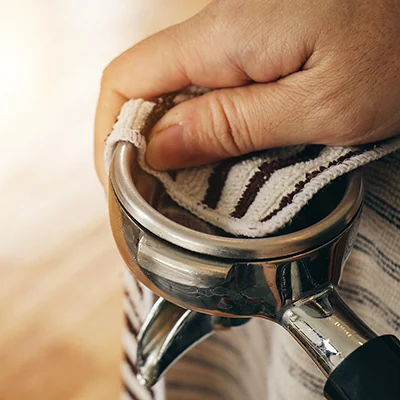
Wipe Down the Steam Wand
Milk residue can be a sneaky culprit, clogging up your steam wand and affecting its performance. After each use, immediately purge the steam wand with hot water to clear out any milk remnants. Then, wipe it down with a damp cloth. For an extra deep clean, soak the tip in warm, soapy water once a week. This keeps your steam wand in top shape, ready to froth milk to perfection.

Empty the Drip Tray
The drip tray is a hotspot for grime and buildup. Make it a habit to empty and rinse it out daily. This not only keeps your machine looking neat but also prevents mold and unpleasant odors from developing. A clean drip tray is a happy drip tray!
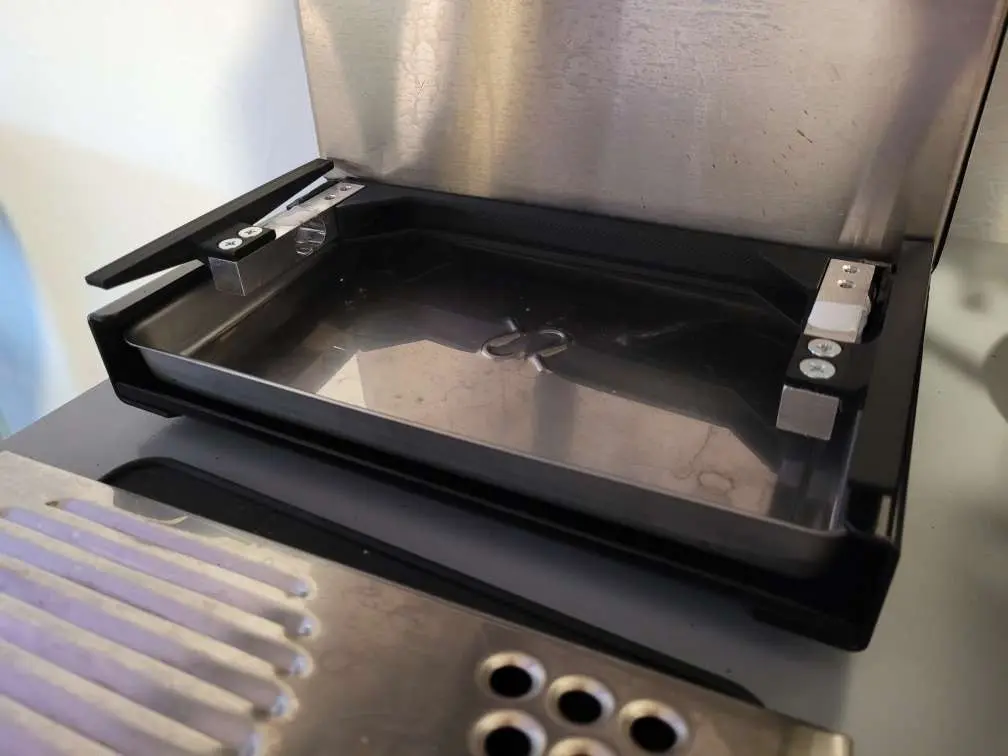
General Tidiness
Take a few moments each day to wipe down the exterior of your espresso machine. Use a damp cloth to remove any coffee splatters, fingerprints, and dust. Keeping the machine clean on the outside is just as important as maintaining its internal components. Plus, it looks great on your countertop!
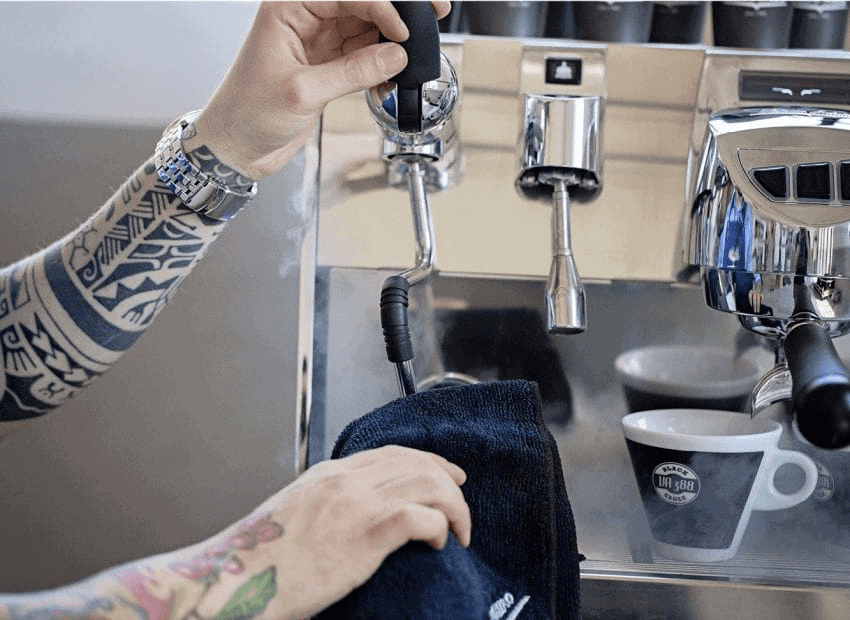
Flush the Group Head
After brewing your espresso, run a quick cycle of hot water through the group head. This helps to flush out any lingering coffee particles and oils. It’s a small step that can prevent buildup and ensure that your machine stays clean and ready for the next shot.
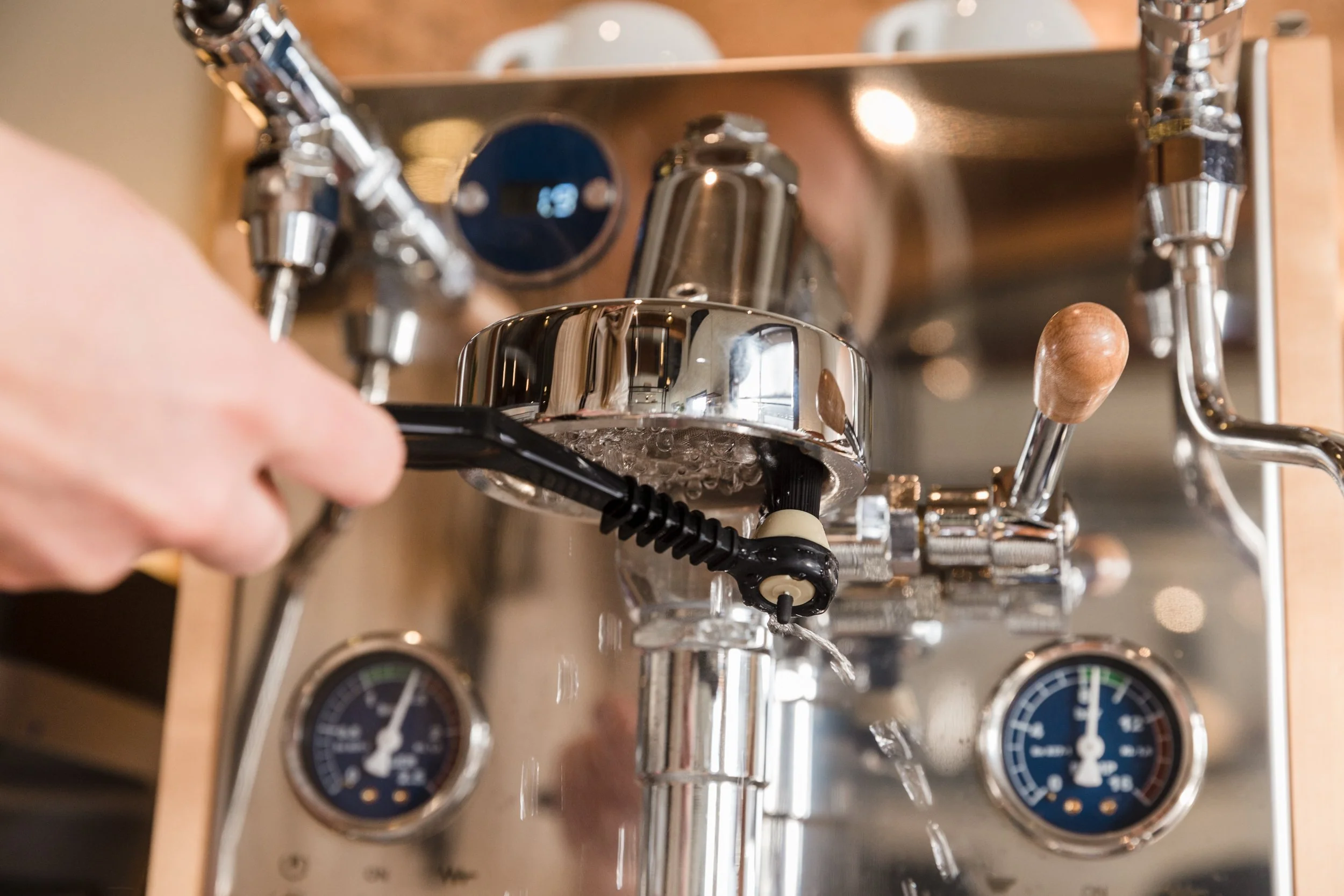
Why These Steps Matter
These daily maintenance tips might seem small, but they play a huge role in maintaining your machine’s performance and longevity. Regular cleaning prevents buildup of coffee oils and milk residue, which can affect the taste of your espresso and potentially damage your machine over time. By dedicating a few minutes each day to these tasks, you’ll ensure that your espresso machine stays in top-notch condition, delivering consistently delicious coffee.
Weekly and Monthly Cleaning Routine
Keeping your espresso machine in pristine condition requires more than just daily upkeep. For the best performance and longevity, you’ll need to dive a bit deeper with weekly and monthly cleaning routines. Here’s a detailed guide to help you stay on top of it:
Weekly Cleaning Routine

Backflush the Machine
For machines with a three-way valve, backflushing is a must. This process helps clean the internal components and remove coffee oils and residues.
- Use a Blind Filter: Insert a blind filter (a filter basket without holes) into the portafilter.
- Add Cleaning Agent: Add a small amount of espresso machine cleaner to the blind filter.
- Run the Pump: Activate the pump for about 10 seconds, then stop and let it release. Repeat this process several times.
- Rinse: Remove the blind filter and run the machine with clean water to flush out any remaining cleaner.
Clean the Drip Tray and Water Reservoir
- Remove and Rinse: Take out the drip tray and water reservoir.
- Wash Thoroughly: Use warm, soapy water to clean these parts, then rinse them well.
- Dry Completely: Make sure to dry them thoroughly before reassembling to prevent mold and mildew.
Soak the Portafilter and Basket
- Disassemble: Separate the portafilter and basket.
- Soak in Cleaner: Soak them in a mixture of warm water and espresso machine cleaner for about 15-20 minutes.
- Rinse and Dry: Rinse them thoroughly and let them dry completely before using again.
Monthly Cleaning Routine
Descale the Machine
Limescale buildup can affect your machine’s performance and the taste of your coffee. Descaling is crucial to keep things running smoothly.
- Prepare Descaling Solution: Use a commercial descaling solution or a mixture of water and white vinegar.
- Run the Solution: Fill the water reservoir with the solution and run it through the machine as if you were brewing espresso.
- Flush with Water: After the descaling solution has run through, flush the machine with clean water to remove any residue. Repeat this step several times to ensure no descaling solution remains.
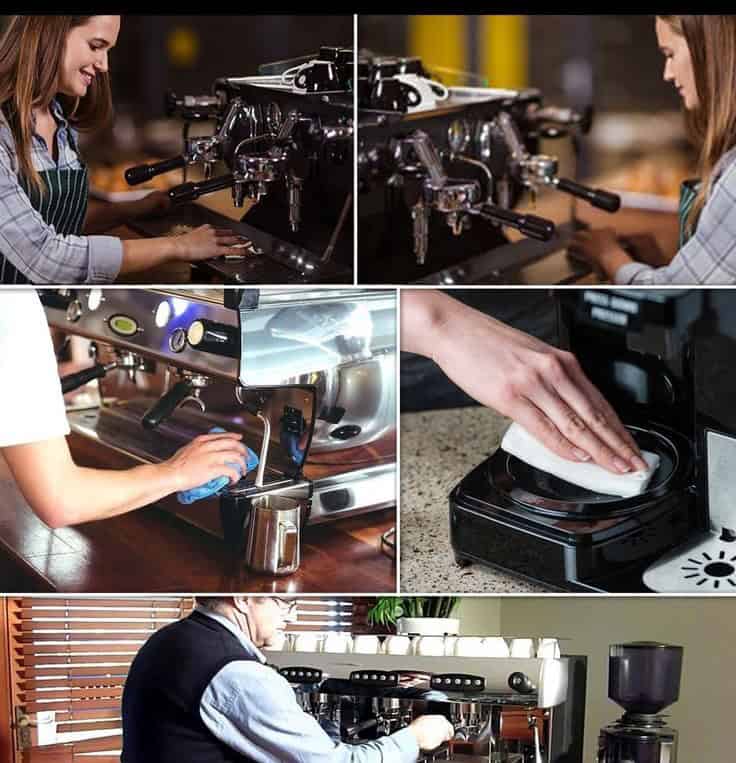
Inspect and Replace Water Filters
- Check Filters: If your machine uses water filters, inspect them for signs of wear or buildup.
- Replace if Necessary: Replace the filters monthly to ensure clean water, which is crucial for great-tasting espresso and to prevent limescale buildup.
Check Gaskets and Seals
- Inspect for Wear and Tear: Look at the gaskets and seals around the group head and portafilter.
- Replace Worn Parts: Replace any gaskets or seals that show signs of wear to prevent leaks and maintain proper pressure.
Tools and Cleaning Agents
- Blind Filter: Essential for backflushing.
- Espresso Machine Cleaner: Specially formulated to break down coffee oils and residues.
- Descaling Solution: Commercial solutions or a vinegar-water mix to remove limescale.
- Soft Brush: Useful for scrubbing the portafilter and basket.
- Damp Cloth: For wiping down the machine’s exterior and steam wand.
- Water Filters: Replaceable filters to ensure clean water.
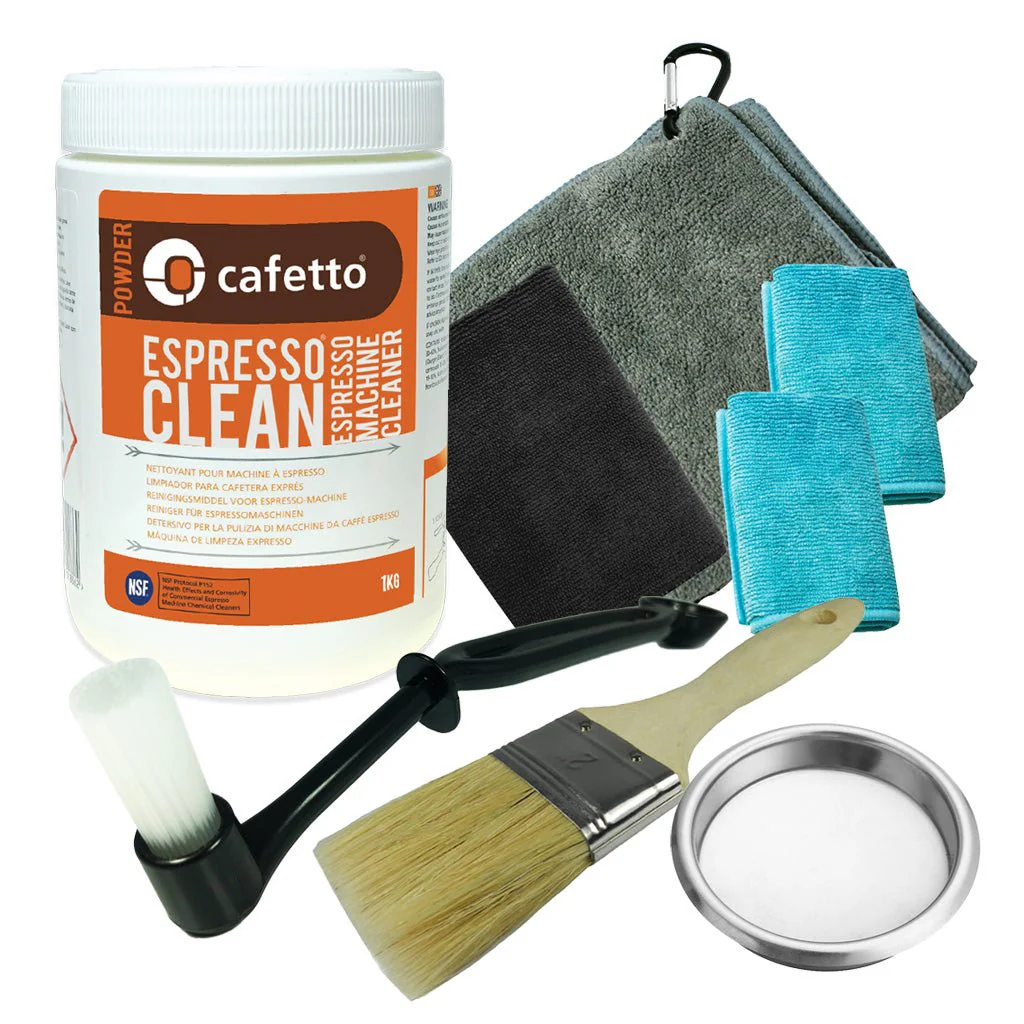
Why These Steps Matter
Weekly and monthly cleaning routines might seem like a chore, but they are vital for the health of your espresso machine. These steps help prevent buildup that can affect both the taste of your coffee and the machine’s functionality. By dedicating some time each week and month to these tasks, you ensure that your machine continues to produce high-quality espresso and lasts for years to come.
Descaling and Deep Cleaning
When it comes to maintaining your espresso machine, descaling and deep cleaning are non-negotiable. These procedures help remove mineral buildup and ensure your machine operates efficiently, producing the best possible espresso. Let’s dive into the details.
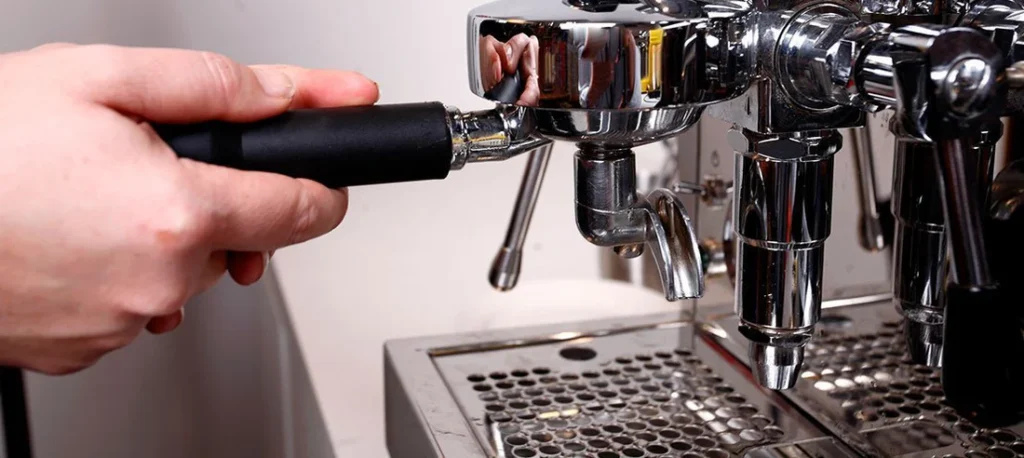
Importance of Descaling and Deep Cleaning
Over time, mineral deposits (like limescale) can accumulate inside your espresso machine, especially if you use hard water. These deposits can clog the machine, reduce efficiency, and impact the taste of your espresso. Descaling removes these minerals, ensuring smooth operation and consistent coffee quality. Deep cleaning addresses other critical parts, removing oils, coffee residues, and ensuring every component is in top condition.
Frequency of Descaling
How often you need to descale depends on your water hardness and usage. Generally, descaling every three months is recommended for average use. If you use hard water, you might need to descale more frequently, perhaps every month.
Types of Descaling Solutions
- Commercial Descaling Solutions: These are specifically formulated for espresso machines and are highly effective.
- Vinegar and Water Mixture: A homemade solution using a mixture of white vinegar and water (usually a 1:1 ratio). While effective, vinegar can leave an odor, so thorough rinsing is essential.
Step-by-Step Guide for Descaling
Step 1: Prepare the Solution
- Commercial Solution: Follow the manufacturer’s instructions to prepare the solution.
- Vinegar Solution: Mix equal parts of white vinegar and water.
Step 2: Fill the Water Reservoir
- Pour the descaling solution into the water reservoir.
Step 3: Run the Solution
- Brew Cycle: Run the solution through the machine as if you were brewing espresso. This ensures the solution passes through all internal components.
- Steam Wand: If your machine has a steam wand, run the solution through it as well to descale this part.
Step 4: Let it Sit
- Allow the solution to sit in the machine for about 15-20 minutes. This helps to dissolve any stubborn deposits.
Step 5: Rinse Thoroughly
- Empty the water reservoir and fill it with clean water.
- Run the clean water through the machine multiple times to flush out any remaining descaling solution. This step is crucial to ensure there is no residue left that could affect the taste of your espresso.

Deep Cleaning Procedures
Group Head
- Backflush with Cleaning Agent: Use a blind filter and an espresso machine cleaner to backflush the machine. This helps clean the group head and internal valves.
- Rinse Thoroughly: Run several cycles of clean water to remove any cleaner residue.
Portafilter and Baskets
- Soak in Cleaning Solution: Soak these parts in a warm, soapy water or espresso machine cleaner solution for 15-20 minutes.
- Scrub and Rinse: Use a soft brush to scrub away any remaining residue, then rinse thoroughly and dry.
Steam Wand
- Purge After Each Use: Immediately after steaming milk, purge the steam wand with hot water.
- Soak in Cleaner: Once a week, soak the steam wand tip in a solution of warm water and cleaner. Use a pin to unclog any milk residue from the tip holes.
Drip Tray and Water Reservoir
- Remove and Clean: Take out the drip tray and water reservoir, wash them with warm, soapy water, and rinse thoroughly.
- Dry Completely: Ensure they are completely dry before reassembling to prevent mold and bacteria growth.
Tools and Cleaning Agents
- Descaling Solution: Either commercial products or a vinegar-water mix.
- Blind Filter: For backflushing.
- Espresso Machine Cleaner: Specialized cleaners for removing coffee oils and residues.
- Soft Brush: For scrubbing components.
- Damp Cloth: For wiping down the machine exterior.
Conclusion
Descaling and deep cleaning might sound like a lot of work, but they are essential for keeping your espresso machine in peak condition. By following these steps regularly, you’ll ensure your machine runs efficiently, lasts longer, and continues to produce delicious espresso. Happy brewing!
Troubleshooting Common Issues
Even with the best maintenance routines, espresso machines can sometimes run into problems. Don’t worry – most issues have straightforward fixes. Let’s go through some common problems you might encounter and how to troubleshoot them. Plus, I’ll share some preventive measures to help you avoid these headaches in the future.

Inconsistent Pressure
Symptom: Your espresso shots are pulling too fast or too slow, indicating inconsistent pressure.
Troubleshooting Tips:
- Check the Grind Size: If the grind is too coarse, the shot will pull too quickly. If it’s too fine, the shot will be slow and over-extracted. Adjust your grinder accordingly.
- Tamp Consistently: Ensure you’re applying even pressure when tamping. Inconsistent tamping can cause uneven extraction.
- Inspect the Portafilter: Make sure it’s properly seated in the group head. Any misalignment can affect pressure.
Preventive Measures:
- Regularly calibrate your grinder.
- Practice consistent tamping techniques.
- Clean the group head and portafilter regularly to ensure a proper seal.
Steam Wand Blockages
Symptom: The steam wand is not producing steam or is producing weak steam.
Troubleshooting Tips:
- Purge the Wand: Run hot water through the steam wand to clear any milk residue.
- Clean the Tip: Soak the steam wand tip in warm water and use a pin to clear any blockages in the holes.
- Check for Clogs: If the problem persists, the wand may be clogged further up. Disassemble and clean as needed.
Preventive Measures:
- Always purge the steam wand immediately after frothing milk.
- Regularly soak the steam wand tip in a cleaning solution to prevent buildup.
Grinder Problems
Symptom: The grinder isn’t working correctly, resulting in uneven or inconsistent grind sizes.
Troubleshooting Tips:
- Clean the Grinder: Coffee oils and grounds can build up, affecting performance. Disassemble and clean the grinder regularly.
- Check Burrs: Inspect the burrs for wear and replace them if necessary.
- Adjust Settings: Ensure the grinder settings are appropriate for espresso and adjust as needed.
Preventive Measures:
- Clean the grinder weekly to prevent buildup.
- Replace burrs periodically based on usage and manufacturer recommendations.
Water Flow Issues
Symptom: Water isn’t flowing through the machine correctly, affecting the extraction process.
Troubleshooting Tips:
- Check the Water Reservoir: Ensure it’s filled and properly seated.
- Inspect the Water Line: Look for any kinks or blockages in the water line.
- Descale the Machine: Mineral buildup can obstruct water flow. Descale regularly to keep the pathways clear.
Preventive Measures:
- Keep the water reservoir filled with filtered water.
- Regularly inspect and clean the water lines.
- Descale according to the recommended schedule.
Espresso Tastes Off
Symptom: Your espresso tastes sour, bitter, or otherwise off.
Troubleshooting Tips:
- Check the Grind Size and Dose: An incorrect grind size or dose can affect flavor. Adjust as needed.
- Clean the Machine: Old coffee oils and residues can impact taste. Ensure all components are clean.
- Check Water Quality: Poor water quality can affect the taste. Use filtered water if possible.
Preventive Measures:
- Regularly clean all parts that come into contact with coffee.
- Use fresh, high-quality beans and filtered water.
- Keep the machine well-maintained to prevent buildup of old coffee oils and residues.
Preventive Maintenance Tips
- Regular Cleaning: Follow daily, weekly, and monthly cleaning routines to keep your machine in top condition.
- Use Quality Water: Filtered water can prevent mineral buildup and improve the taste of your espresso.
- Routine Inspections: Regularly inspect all components, such as the group head, portafilter, steam wand, and grinder, to catch and address issues early.
- Follow Manufacturer Guidelines: Adhere to the maintenance schedule and guidelines provided by your machine’s manufacturer.

Disclosure: Our blog contains affiliate links to products. We may receive a commission for purchases made through these links. However, this does not impact our reviews and comparisons. We try our best to keep things fair and balanced, in order to help you make the best choice for you.

